#the little engine that could 1991
Explore tagged Tumblr posts
Text

Animation cel redraw of Rollo the Clown from "The Little Engine That Could".
This was my first animation cel I made years ago! Rollo means the world to me and is the character that inspired me to start making cels.
#Rollo the Clown#animation cel#traditional art#The Little Engine That Could 1991#90s cartoons#90s nostalgia
17 notes
·
View notes
Text
My Favorite 1991 Movies:
1. Terminator 2: Judgement Day (1991)

2. Hook (1991)
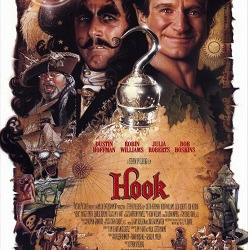
3. The Little Engine That Could (1991)

4. Godzilla Vs King Ghidorah (1991)
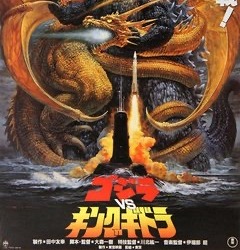
5. Beauty And The Beast (1991)

#1991 movies#1991#beauty and the beast#terminator 2#terminator#hook#hook 1991#godzilla vs king ghidorah#Godzilla#the little engine that could 1991#the little engine that could#Disney#Peter pan#trains#screencap
8 notes
·
View notes
Text
to the lost world jurassic park
5 notes
·
View notes
Text

I think I can!
#fanart#my drawings#my art#the little engine that could#tletc 1991#tillie#anthropomorphic locomotive
2 notes
·
View notes
Text
Tony’s Childhood. Part 1: Identifying facts

In the MCU, Tony sometimes acts like a kid. There is a reason behind every behavior, so I wondered what it was like for him when he was a real kid.
So, the questions of the day: what do we know about Tony's childhood? Did he have one? And, most importantly, how did it affect him?
Let’s first list what we know from the movies:
At age 4 Tony built his first circuit board (IM1)
At age 6 built his first engine (IM1)
Was sent to a boarding school by Howard (IM2)
Cracked the Pentagon’s firewall in high school on a dare (AoU)
Had a nanny until the age of 14 (IM3)
Went to college at 14 (IM1)
Built Dum-E and U when he was there (IM1)
At 17 graduated summa cum laude from MIT (IM1)
Continued his education until his parents’ death (CW)
Tony’s genius gave him two things: the brain and the pain. And by the pain, I mean that instead of interacting and bonding with his parents, enjoying life, playing, having fun, making friends, taking care of pets, and all the other things children do to gradually prepare for adulthood and grow up "healthy", he got this list of achievements. That doesn’t make a person normal.
Parents

We know his relationship with Howard was complicated. Howard loved him in his own way. He had too many things to do to be a good father: SI, S.H.I.E.L.D., scientific projects, trying to build a better future with clean energy, etc. All good, except when you want your child to love you back. Especially if in the tiny amount of time you spend with him, you don’t show him any signs of affection.
What do we know about Maria? Her name, what she looked like, that she played the piano, and died at Winter Soldier’s hand on Dec 16, 1991. That’s it. She didn’t spend much time with Tony either. Remember, he even had a nanny, instead of a mother. Tony's words about her showed that he loved her, but he didn't talk much about her. Because she wasn’t present in his life enough. Why? Because…
School
Howard sent Tony to a boarding school.
Here’s in the S.H.I.E.L.D.s file we have this information about the school:
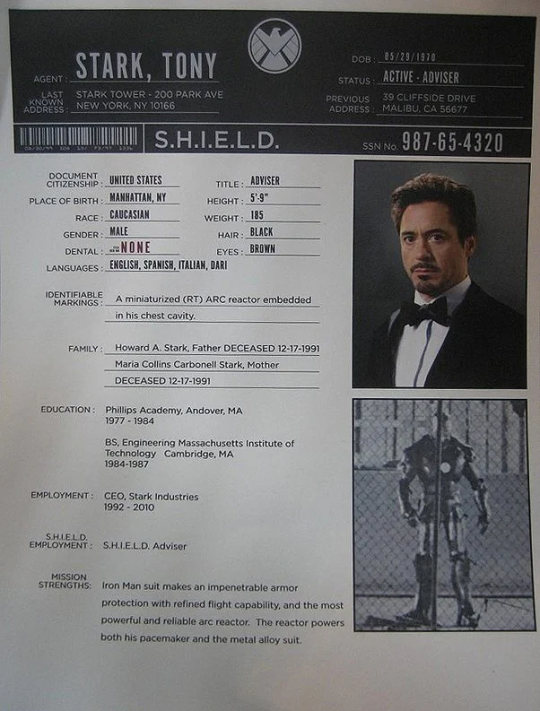
“Phillips Academy, Andover, MA 1977-1984”
This means he was there from age 7 to 14. Howard sent him to a boarding school when he was SEVEN.
Phillips Academy Andover serves grades 9-12 only (it is a college preparatory school). Thus, either this is a mistake by the creators of the film/file, or Tony, due to his genius, became an exception. Since the early age he was already at school was also mentioned in IM2 tie-in comics, and in Earth-616 that was also 7, we can mark 1977-1984 as valid.

Think about it again: Tony was sent to boarding school in another state when he was 7 years old. He spent another 7 years there, alone, among high school-aged teenagers. No parents around, no peers.
For example, even Hogwarts accepts 11-year-old children, and they live with their peers. Now imagine Harry Potter, at the age of 7, is thrown into a dorm with 7th-year students and locked there. Doesn’t make a person normal either, does it?
Nannies and Jarvis
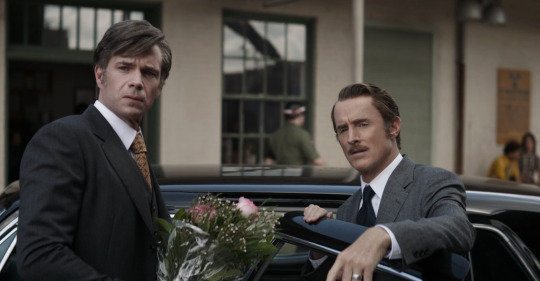
Since Tony was at the boarding school, there are two options for how he could have a nanny (mentioned in IM3) and spend time with Edwin Jarvis:
1) He was at the boarding school with a nanny. There is almost no possibility that the nanny was Edwin Jarvis because Jarvis was Howard’s butler and had other responsibilities.
2) He had a nanny at home in the summer and during short school breaks. In this case, his parents couldn’t even give him this little of their precious time.
In any case, he could only see Jarvis at home, a few months a year at most.
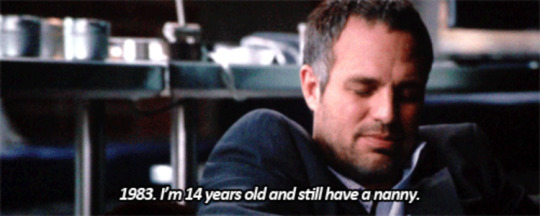
Note: There is a date error in IM3, stating Tony was 14 in 1983. This is clearly an error and we can omit this detail.
Bullying
Remember this dialog between Tony and Harley in IM3?


0:45:15 – Harley asks him how he knew he was being bullied at school. Tony doesn't answer. He gives him a non-lethal flash thing to "discourage bullying."

We see that Tony knew exactly what was going on with Harley at school. Because that’s exactly what happened to him there. Harley reminded him of himself. Brilliant kid with no friends and practically no parents. He was bullied by 9th-12th graders.
If he had a nanny with him at the school, that probably made things even worse. He would be bullied because he has a nanny, and despite he has one to look after him.
In Part 2 we will discuss how all this affected him. Stay tuned.
#tony stark#iron man#marvel#mcu#the avengers#iron man 3#iron man 2#avengers age of ultron#captain america civil war#harley keener#phillips academy andover#edwin jarvis#howard stark#maria stark
382 notes
·
View notes
Text
A Different Beast

Beast Wrestler (ビースト・ウォリアーズ "Beast Warriors") was one of the first monster fighting games. Released in 1991 for Sega Genesis/Mega Drive, it is notable for its unique style and concept.
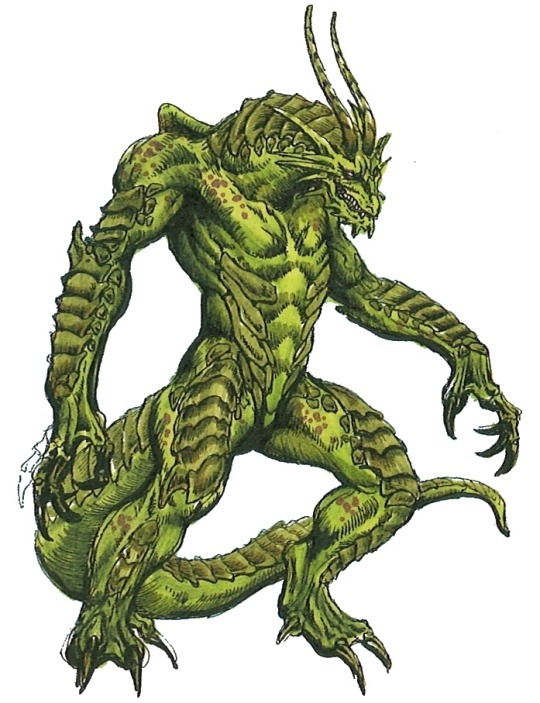
Yasushi Nirasawa was the man responsible designing the game's monsters, dubbed Dragon Warriors. Nirawasa's designs have appeared in various Tokusatsu productions such as Kamen Rider, but perhaps his most famous would be the 2004 redesign of Gigan for Godzilla Final Wars (He was also responsible for the Xilien designs in the film as well).

Back in 1991, Nirasawa was primarily known for his sculptures and models featured in, and on the covers of Hobby Japan. The box art for Beast Wrestler showcases his work. The image was prominently used in the print advertising.
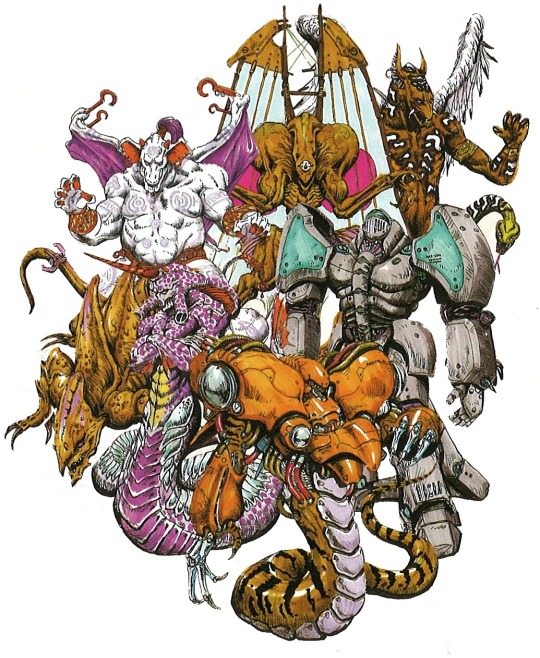
The Dragon Warriors all quite varied, ranging from humanoid animals to an ooze. Some with various levels of cybernetics and some had truly chimeric designs.

Instead of randomized fights each match of the Tournament is fixed. The player is the "ruler" of a ENTSLL 2019 Dragon Warrior and starts at the bottom of the Domestic Rank to work up to the top of the World Rank.
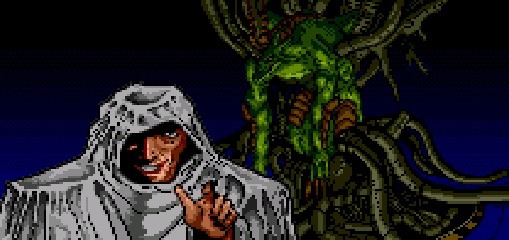
Yasushi Nirasawa did a six-page comic that was in the instruction manual for the Japanese version of the game. It gives a look at the world where genetically engineered 10 meter tall monsters battle in the arena.

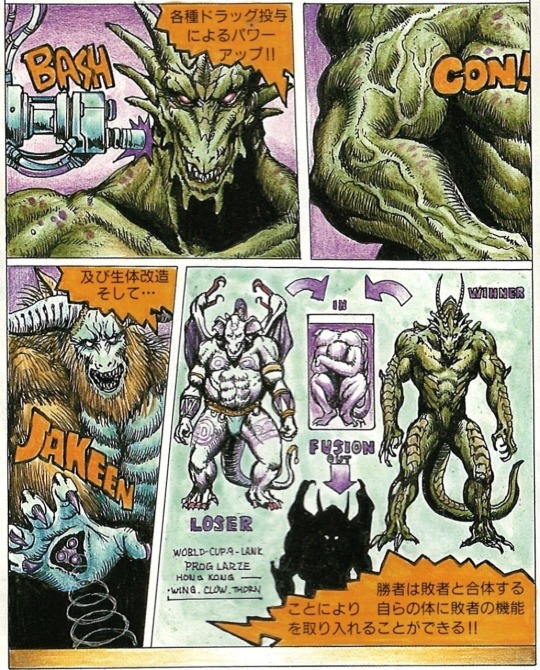
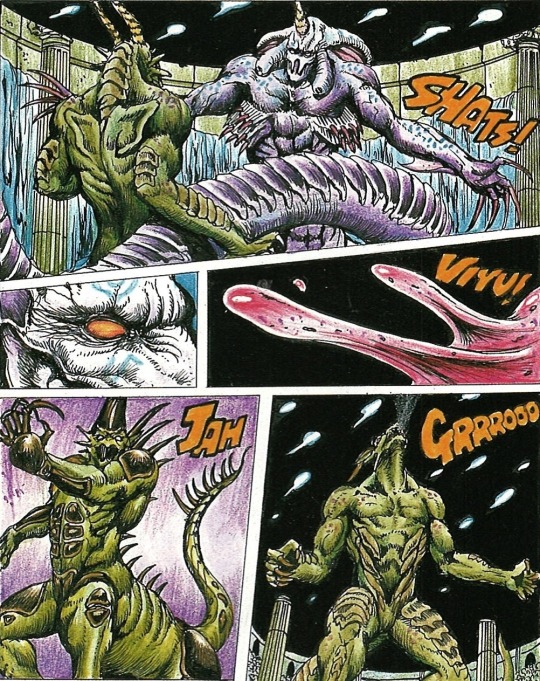
Aside from the designs and the setting, the other defining feature of the game is the concept of combining your Dragon Warrior with a vanquished opponent.
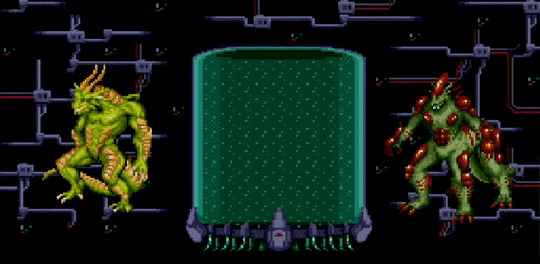
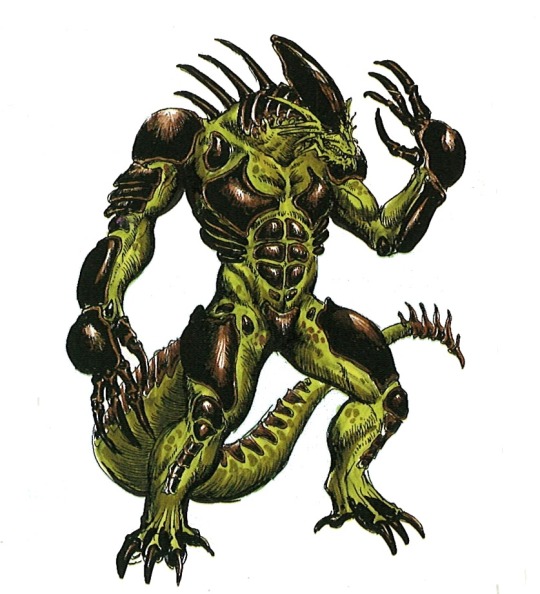


The first time, the player gets two options for combining. This sets up two different paths for completing the World Rank. Based on this decision, a different Dragon Warrior is used in each path to combine for a second form.

While there is much to appreciate about the concept and designs, the gameplay is a shortcoming. The hit boxes don't correspond well and fights are slow. There are some loops and exploits that help with the difficulty, but that doesn't lead to a satisfying victory.
The game also has a Match mode for a fight against the computer or another player, using some of the Domestic and World Rank fighters. Unfortunately, this mode is also is subject to the same issues and the Dragon Warriors are very unbalanced.

It would be fun to see this game made today with modern game technology and design. Yasushi Nirasawa's detailed creations could really come to life. Also, it would be great to see more and varied combinations of beasts.
With a little more time and polish, Beast Wrestler could have been a cult game. Instead, it's an interesting obscurity.
#beast wrestler#yasushi nirasawa#video games#sega genesis#mega drive#renovation products#telenet#ビースト・ウォリアーズ#韮沢靖#日本テレネット
216 notes
·
View notes
Text
Spontaneously Sexy (90s Dave Grohl x reader)
Main Masterlist Rockstar Masterlist
Word Count: 1.4k
Content: cursing, allusions to sex (yet no actual smut)

Olympia, Washington ♡ 1991
"Fuck this," I say, looking down under the hood of my 1970 Oldsmobile Vista Cruiser. It was a gift from my Dad for graduating High School. Little did he know that not even two months later I'd be using the piece of shit to run to Seattle to join a rock band.
The rain was pouring down on a freezing December night. My band, Low-Kut, had just played a gig downtown in an underground rock bar as we were trying to raise funds to record our debut album. I didn't get out of Olympia before my car engine started acting up. Luckily, I had pulled into an empty parking lot before it shut down completely.
Ask me how to build an electric guitar from scraps? No problem. Ask me anything about cars? I'm fucked. After about 15 minutes of standing in the rain, staring blanky under the hood of my car, I gave up.
Looking around me for any sign of life, I noticed a payphone across the street at a closed gas station. I walked over to it, counting the change in my pocket as I decided who to call. I put some quaters in and dialled one of the few numbers that I had memorised.
"C'mon, c'mon," I muttered under my breath as the phone rang, praying that theh didn't have their phone disconnected.
After a while I hear the familiar voice of my boyfriend speak through the phone. "Hello?"
"Hey babe, it's me-" I talked as quick as I could, trying to say what I needed to before my change ran out.
"Hi! How was your show hun?" Dave asked, excitedly. I could hear the genuine interest in his voice, which made me smile.
"It was really good, but my car broke down a few blocks from your place and I really don't want to deal with it tonight so can I stay over?" I asked, hopefully.
"Uh, yeah- yeah sure. I just gotta check with Kurt first but I'm sure it will be alright. Where are you? I'll come and get you," he spoke in a worried tone.
"No no, it's alright I'm not too far away. Just tell Kurt and I'll be there soon, ok?" I nodded, cautious about how much time I had left on the phone.
"Ok, see you then," he said and hung up the phone.
Dave and I had met after a Scream gig on their last American tour and hooked up in the back of my car. Then, a few months back, he had come to one of my shows with Kurt and Krist, who were friends with Nancy, our lead singer. After talking for a while, we realised where we knew eachother from and laughed. I gave him my number and he called to ask me out the next day.
I smiled at the memory as I grabbed my guitar case from the back seat of my car and walked down the streets of Olympia. The rain was getting heavier and I could feel it soak through my denim jacket, which I hugged tight to my body in attempt to keep warm. I was really starting to wish that I'd accept Dave's offer to come and pick me up.
The walk to 114 NE Pear Street seemed to take forever in the rain, though I knew it couldn't have been more than 10 minutes. I was buzzed in and I made my way up the almost collapsing staircase to their apartment.
Their apartment was the bare minimum of living, one bedroom (occupied by kurt), one bathroom, a tiny kitchen and a living room with an old couch that Dave slept on. For this reason, I hadn't spent the night before.
I knock on the door, for it to be opened by Kurt who greets me with a tired smile before retreating into his bedroom, leaving the door open. I hear the shower running through the apartment's thin walls.
"There's no lock... on the bathroom door," Kurt gives me a knowing smirk, pushing back his mop of blonde hair as he puts on the headphones that connects to his guitar amp.
I roll my eyes at the action before walking over to the living room and putting down by guitar case on the couch. I look around notice that the room looks... semi-clean? I smile at the thought of Dave rushing around trying to make the atrocity that usually is their apartment look half presentable when I called him from the payphone.
I make my way over to the bathroom and slowly open the door. The rusted hinges hinges creak quite loudly, making me cringe at the unpleasent sound.
"Kurt, please don't take a piss man. I'm in the shower," Dave's voice calls from behind the blue curtain and it takes all my strength not to immediatley start laughing. I close the door behind me as quietly as I can.
I quickly strip out of my wet clothes, leaving them on a pile the ground before tucking my head around the end of the shower curtain, facing the back of my naked boyfriend. Suds cover his shoulders and he has placed his long black hair atop his head while it was full of shampoo. "Hi," I say, announcing my presence.
Dave quickly turns his head over his shoulder to look at me, a smile quickly spread across his face once he realised who it was "Hey dear," he replied, rinsing out the shampoo.
I shake my head with a smile. He has a habit of using 1950s pet names ironically, as well as being an avid user of the phrase "honey, I'm home" while walking back into a filthy, cigarrete stained flat full of grunge musicians.
"Can I join you?" I asked. I watched as Dave stopped moving completely, though I wished that I could've seen the blush on his face in that moment.
"Y-yeah sure," he replied. I smiled, quickly ridding myself of my damp clothes into a pile on the floor before stepping into the bathtub-shower.
Hearing me close the shower curtain behind be, Dave turned around. He let out a low whistle as he looked me up and down. I moved my hands to try and cover myself out of embarassment, though he had seen my body countless times.
"You look nice," Dave smiled, taking a step towards me. I looked up at his face as I felt his calloused fingers rest on my bare hips in a gentle touch. "You should wear this outfit more often," he joked, raising his eyebrows.
"Mhm, so should you," I mumble stretching my neck upwards so our faces were incredibly close, feeling his warm breath on my lips as I waited for him to close the remaining distance between us.
He smiled goofily once more before pressing his lips against mine softly. As I deepened the kiss I could feel his hands run up and down my waist in a featherlight touch. When we made love it was always that, loving, fun and gentle.
As his hands trailed over my ass to the back of my thighs, I gasped a bit in shock and pulled away from the kiss. I giggled as I felt him lift me up, pressing my back to the cold shower tiles.
Dave leaned in to kiss me once more , but just before our lips met, I heard him mutter "Oh shit," as his feet slid out from underneath him and he fell into the tub.
Dave pulled me in close to him, subconciously, so that I wouldn't hit my head against the tiles as I fell into the bathtub on top of him. After a few moments of silence, the both of us burst into fits of laughter
As I tried pull myself up out of the bath, the shower curtain became un-attatched from the wall, falling into the bath on top of the both of us and causing the water from the shower head to spray all over the bathroom.
Though it would've been sensible for one of us to turn off the water, both Dave just continued laughing at the silliness of the situation.
"That-" Dave spoke inbetween chuckles. "That serves us right for trying to be spontaneously sexy,"
"Yes," I agreed "Only formal intercourse from now on,". My false-seriousness only caused him to laugh harder.
He shook his head, smiling as he looked up at me. "I love you," he spoke softly, pulling me in so that our lips met once more
28 notes
·
View notes
Text
Jack McGee

Physique: Husky Build Height: 5'5" (1.65 m)
John J. McGee (born February 2, 1949) is an American television and film character actor who has appeared in over 100 films and television series. He is best known as Chief Jerry Reilly on the television series Rescue Me. In 2010, he co-starred as Hickey on the Spike TV comedy series Players. He is also known for The Fighter, Gangster Squad, Basic Instinct and Moneyball.





Built like a fireplug with his classic working stiff features and gravelly raspy voice has landed McGee countless roles, usually playing gruff, blue-collar guys characters. All in all, he basically looked like a young Charles Durning, another hot chubby daddy I admired. Over the years he has been at the centre of so many of my dirty little fantasies.



Born in the South Bronx, New York, McGee attended Cardinal Hayes High School in the Bronx, where he was class president and also played on the Football team, and appeared as a member of the background harmony in The Young Rascals. In 1977, he became a firefighter for the New York City Fire Department in order to pursue his acting career. As a firefighter, he served 10 years with FDNY Engine Co. 89 and Ladder Co. 50 in the Bronx. His first major role was in the 1985 firefighter film Turk 182.





McGee lives in Los Angeles, Studio City, CA with his wife, Stephanie and their four rescue dogs. He's apparently happily married, but there's something about him, makes me think he would fool around with a man (the things he says and he likes to jokingly kiss guys). It's kind of weird how you imagine certain things about a guy, but he strikes me as the kind of guy you could spend hours doing in every position until he cums. Now I do have to say, this is all the imaginings of my furtive mind because he is probably a very nice and respectable man. He just doesn't come across that way.
Anyway, I prefer the kinky, sordid version, that his marriage is just a cover story. No-one correct me.



RECOMMENDATIONS: Silver Skies (2016) - Shirtless pool scene. Gangster Squad (2013) Moneyball (2011) The Fighter (2010) No Place Like Home (2008) - Rear nudity, shirtless bath scene. Rescue Me (TV Series 2004 - 2007) - Sex scene Miracle on 34th Street (1994) - Rear nudity. Basic Instinct (1992) Backdraft (1991) - Shirtless scene. Crash and Burn (1990) - Shirtless scene.
16 notes
·
View notes
Text
Character Profile - Cousin Itt

Cousin Itt was created for the 1960s TV show, so I don’t have a quote from Charles Addams saying what he should be like. He was fashioned after two drawings of a man completely covered in/made out of hair and wearing sunglasses:

In his first TV appearance, he was a little person wearing a suit and gloves, who simply had a tremendous amount of hair. You could clearly see his legs, arms, and hands. Here he is performing a magic act for the family:

That first costume was made using real human hair, but since everyone everywhere smoked all the time back in the 60s, the costume was later changed to synthetic hair to be less of a fire hazard. They also added more hair, glasses, and sometimes a hat. This became the iconic look of Cousin Itt.

He was played by Felix Silla (above right), who at 3’11” tall was the perfect height to wear the costume. While he performed Itt’s actions, they did not use his voice. Itt’s signature meeping sounds were created by the show’s sound engineer, Tony Magro. His way of speaking was replicated in various ways in every later incarnation, even when he was voiced by a celebrity. In the 2019 and 2021 3D animated films, his voice was provided by Snoop Dogg, but it sounds like it was played backwards and the pitch was raised and possibly sped up. Despite his speech being indecipherable, the members of the Addams family can all understand Itt perfectly.
In the sitcom, Itt will ring the doorbell when he arrives at the house, but if they take too long to let him in, he’ll climb up the walls and enter the house through a window or the chimney. Itt doesn’t live in the house, but he has a guest room built to his dimensions. The others have to stoop to fit inside of it. It’s played for comedic effect, but it’s kind of wonderful that there’s at least one place where other people have to deal with everything being built for his size, rather than the other way around.

The plots for Cousin Itt’s appearances in the sitcom centered around him finding a job or, at one point, losing his hair. In the 1991 film, he falls in love with Margaret Alford, the wife of Tully Alford, who was scamming the family. This sort of establishes Itt as a ladies’ man, which carries over into the 90s animated series and the 3D animated films. Though in the 1993 movie, he’s happily married to Margaret and they have a hairy little child together named What.

Cousin Itt has not yet appeared in the Netflix show Wednesday, though an ancestor of his has. In the seventh episode, Fester, Thing, and Wednesday break into a safe behind a painting of Ignatius ”Iggy” Itt. The way that Fester refers to him makes it clear that this is not the Itt that they both know today, but a different, earlier relative. In addition to that, the dates under the painting are from 200 years ago, and we can assume that Cousin Itt is not over 200 years old. Though it is hard to tell with this family.

Will Cousin Itt make an appearance in Wednesday? It’s unlikely to happen in season 2 unless it’s a surprise. None of the guest stars listed are under four feet tall. There is the possibility that one of the new actors with an unnamed role could be the voice actor for Itt, and a little person would be hired to do the body work, but it’s far more likely that they would hire someone famous for the role.
We are already meeting Grandmama in season 2, and there will be some amount of plot happening in the Addams family mansion, so we can’t completely rule out the possibility of Itt making an appearance. However, they may also wait until a third season to introduce him, and hire someone like Warwick Davis to play him. Right now, only those involved in the show know for certain.
19 notes
·
View notes
Text
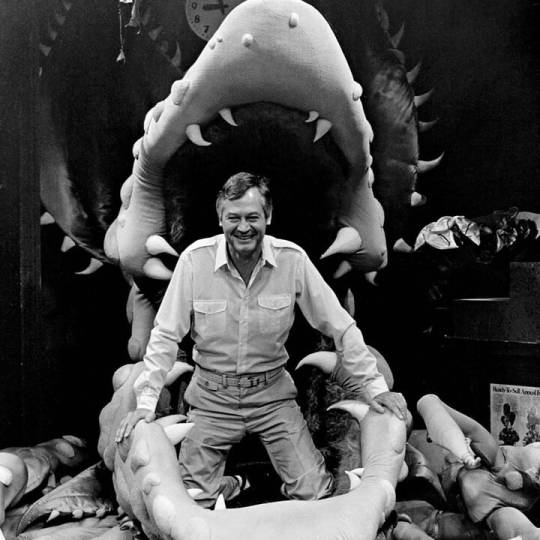
Roger Corman
American film director and producer who liked to describe himself as the ‘Orson Welles of the Z movie’
Although Roger Corman, who has died aged 98, directed more than 50 films, he will be remembered mainly as an influential producer and genial godfather to the New American Cinema of the 1970s. The list of his beneficiaries makes up a Who’s Who of contemporary American film. Martin Scorsese, Peter Bogdanovich, Francis Ford Coppola, Monte Hellman, and Jonathan Demme were all directing proteges of Corman.
“You can see right away that the guy’s a superior producer,” said Jack Nicholson, who appeared in five films directed by Corman. “He’s the best producer I’ve met in the business. The man carried me for seven years. I feel tremendously indebted to him.”
But to pre-70s cinemagoers, Corman was an auteur in his own right, describing himself as the “Orson Welles of the Z movie”. The schlocky titles of the majority of his films disguise the fact that Corman was an extremely cultured, elegant and well-spoken man, without the slightest hint about him of the rock’n’roll counterculture in which he played an important part. He also had cameo roles in about 30 films, including as an FBI director in Demme’s The Silence of the Lambs (1991), and a senator in Coppola’s The Godfather Part II (1974).
Corman’s filmography as a director can be roughly divided into three groups: the quickies (1955-60), the adaptations of the works of Edgar Allan Poe (1960-64), and the mainstream experiments (1966-70). In the first period, on a tiny budget and in rented studios, he produced and directed such Z movies as Attack of the Crab Monsters (1957), Teenage Caveman (1958) and She Gods of Shark Reef (1958). Science-fiction horror with tatty special effects, cut-price monsters and unknown casts, they were aimed at the drive-in movie youth market.
He would produce up to seven films a year, his fastest being The Little Shop of Horrors (1960), which was reputedly shot in two days and a night. It was filmed using the same sets as A Bucket of Blood (1959), a self-referential black comedy. Corman once joked he could make an epic about the fall of the Roman empire with two extras and a sagebrush.
In slight contrast was the Poe series, amusing shockers in widescreen and colour. These included House of Usher (1960), The Pit and the Pendulum (1961), The Raven (1963), The Terror (1963) and, perhaps the best, The Masque of the Red Death (1964).
Greater commercial success came with such films as The St Valentine’s Day Massacre (1967) and Bloody Mama (1970), but soon afterwards Corman retired as a director. His reasons were manifold: he had made around 26 films in 10 years and felt the need of a rest; he also complained that when he made cheap films nobody tinkered with them, but as a big-budget director everyone seemed to think they had the right to maul his work. “Specifically, a picture I made called Gas-s-s-s for AIP [American International Pictures], which was completely recut,” Corman said.
“It was a controversial kind of a comedy, and AIP cut all the funny stuff right out of the film, including the entire ending. The film was never shown anywhere as I shot it, and I felt, frankly, they emasculated the picture and destroyed any possibility of success.”
He was born in the city of Detroit, Michigan, to William Corman, an engineer, and Anne (nee High). His paternal grandparents were Russian-Jewish immigrants, and his mother was of German ancestry.
The family moved to California and Roger went to Beverly Hills high school before beginning an engineering degree at Stanford University. It was the middle of the second world war, and he spent two years as a navy cadet before finally graduating in 1947. He entered the movies at 20th Century-Fox as an errand boy, but then, under the GI Bill, took off to study English literature at Oxford University for six months, followed by six months in Paris.
In 1954, Corman sold a low-budget script to Allied Artists. It was released as Highway Dragnet, for which he insisted on an associate producer credit. But he was disappointed with the film and, believing that he could do a better job as a producer, scraped $12,000 together to make Monster from the Ocean Floor (1954), directed by Wyott Ordung.
After selling the film for a profit of $100,000, Corman scripted and produced The Fast and the Furious (1954). Shot in 10 days by the film’s star, John Ireland, it was distributed by a small new company, American Releasing Corporation, later renamed American International Pictures, with Corman as its house director.
In the early 60s, for AIP, he made his series of adaptations from Poe, a favourite writer of his since childhood. Using the team of the designer Daniel Haller, writer Richard Matheson and cameraman Floyd Crosby, he created garish, camp and amusing shockers, taking their tone from Vincent Price’s sibilant, ghoulish hamming.
They were sometimes referred to as “late wife” movies because, in most of them, Price had a deceased wife lying around a castle. Taking only 15 days to shoot, they contained scenes and sets interchangeable from one film to the next, but they were popular and gathered a cult following.
A departure from the horror genre of the period, and one of Corman’s favourites, was The Intruder (1961), a gritty social drama in which a rabble-rouser (William Shatner) arrives in a southern town to disrupt racial integration in the schools.
Corman’s taste for updated American Gothic was evident in the biker movie The Wild Angels (1966), which featured actual Hells Angels, and The Trip (1967), an indulgent plunge into psychedelia written by Nicholson. Both starred Peter Fonda, who went on to produce – and star in alongside Nicholson and Dennis Hopper – the Corman-influenced Easy Rider (1969).
Corman’s blood-splattered recreation of 1928 Chicago in The St Valentine’s Day Massacre was more tightly controlled and wordier than his usual product, with impeccable performances from Jason Robards as Al Capone and Ralph Meeker as Bugs Moran. In the cold-eyed and unromantic Bloody Mama, Shelley Winters let rip as Kate Barker, the murderous matriarch of a gang of outlaws, with an unknown Robert De Niro playing her son.
Corman followed up that success with a tale of another female gangster, Boxcar Bertha (1972), hiring a young Scorsese as director.
He gave up directing after The Red Baron (1971) nose-dived at the box office. Phony German accents were dubbed in against his wishes. However the dog fights, actually filmed in the air, gave the first world war flying sequences authenticity.
In 1970, he set up his own company, New World Pictures, and continued to produce formula films for the youth market, abiding by the profitable philosophy “make ’em quick, make ’em cheap and make ’em popular”. These included motorcycle movies (Angels Die Hard); sexploitation flicks (Night Call Nurses, Fly Me, Caged Heat!, the latter directed by Demme) and horror films (Night of the Cobra Woman), but the company also distributed films in the US at the opposite end of the creative scale, such as Ingmar Bergman’s Cries and Whispers (1972) and Federico Fellini’s Amarcord (1973).
In 1990, Corman sat down in his director’s chair once more and made Frankenstein Unbound, with John Hurt and Raul Julia, which proved he could still spin a gory tale, though, alas, without the success of earlier years.
However, the title of his 1998 autobiography, How I Made a Hundred Movies in Hollywood and Never Lost a Dime, still rang true. He continued to produce and executive produce films into his 90s. In 2009, he received a lifetime achievement Academy Award.
He is survived by his wife, Julie Halloran, a film producer, whom he married in 1970, and their four children, Roger, Brian, Mary and Catherine.
🔔 Roger William Corman, film director, producer and actor, born 5 April 1926; died 9 May 2024
Daily inspiration. Discover more photos at Just for Books…?
15 notes
·
View notes
Text
On the Forgotten Art of Crop Circles

Source; Guardian UK crop circle gallery
Some of my favorite websites in the mid 90s were those of crop circle makers, with photo galleries, reminiscences, how-tos, and even a simple game using aerial photos of fields on which you could design your own.
I've forgotten most of the URLs, but one I do remember was circlemakers.org. Early, hand-coded websites may be a little confusing to navigate; let me drop you here for a little background history.
It's a fun look at a huge subculture — they had cons! — that blossomed in the transitional 90s between pre-internet society and today's. The infant web let them communicate, collaborate, and share their activities. Computers let them plan increasingly complex patterns. Hand-coded websites were a cinch for these geometrically-inclined problem solvers.
Yet the crapass nature of early search engines meant you would only find them through word of mouth or following links from sites you already knew about. Between that and the limited userbase of the pre-commercial web (mostly academics, nerds, and eccentric introverts), they could share their weird hobby right out in public while remaining largely invisible to the wider world. Sound familiar?
@brightlotusmoon your post mentioning "Alien Histories" ignoring the known authorship of Mothman reminded me of crop circles — "Oh, I know who started those; his name was Doug."
(Or was it? This account of a 1991 competition questioned whether Dave & Doug's 1970s crop circles really launched the fad. Other researchers have claimed to have found evidence of circles in older aerial photos or records. But geometric patterns are modern.)
One last item. Here's an account of a circle maker who recently hung up his boards due to very moden concerns. A pity—gorgeous art.
#crop circles#folk art#paranormal#(allegedly)#underground artist#stories#early web#early 2000s#1990s#urban legends
29 notes
·
View notes
Text

It's International Clown Week!
Wanted to repost one of the animation cels I drew of Rollo the Clown a few years back 🎈
4 notes
·
View notes
Text

The Little Engine That Could (1991) Title Card
#the little engine that could#the little engine that could 1991#1991 movies#1991#trains#i like trains#I think i can#universal studios#universal#screencap
2 notes
·
View notes
Text
RaR Musings #25: Re-trod Ground
In a perchance perusal of game sites and reddit threads, I saw a post asking about the risk of spiritual offense in using a tarot card deck in a mechanic. The comments assured OP that tarot wasn't even explicitly used spiritually, originally just a randomized deck of cards, no more spiritual than the gods influencing how dice might land, but one comment brought up the use of a couple games: The Hidden Isle, which uses existing tarot but with new rules, and Kult, which invents it's own tarot deck.
Given that I'd had the idea for Road and Ruin to have a tarot-esque deck for randomization elements several years ago, I try to keep an eye out for anything that might cleave a little too close to what I considered to be a good and unique idea, and that I might be accused of ripping off.
And so, I would become distraught and tormented by the realization that not only had Kult: Divinity Lost come up with a system that, at least at a distance, was entirely indistinguishable from what I had wanted to do, but that a 4thED remake was kickstarted in 2018, based on the original game, released in 1991, naught but a few years before I was even born.
TTRPG design spaces recommend doing your research on existing options, lest you discover that another game already does what you're looking for a game to do. I'd half-ignored the advise, letting myself be inspired by the gist of rules in other games rather than look too deep into them, but I'd tried to stay independent, convinced I could reason my way into good design first, and then look into other games later to see how to refine it, with examples done right.
I take a lot of pride in original ideas. It usually paints me as an idiot, one way or another. If anybody is like me, my best advise is to use a good idea, either your own or someone else's, as a foundation, but to let your skill in transforming that idea into a masterpiece of engineering speak for itself. Ideas are cheap, and a vessel of potential value, but it takes doing something about it to actually have that value realized.
In any case, after reading into it a bit further, I could see why I'd never heard of Kult before, not in the six years since it's kickstarter, and not in the 33 years since it was first released.
Kult makes a few brutal mistakes in their engineering of what is otherwise a pretty solid idea (if I do say so myself, given that I had the same). Between the insistence that they change all the tarot cards, but still use a 78 card deck of 22 major arcana and 4x suits of 14 cards, their rather esoteric (and sometimes downright opaque) meanings and applications of each card forcing players to check a guidebook for definitions, and their somber, "spiritually-guided" attitude in encouraging the GM to light a candle, play atmospheric-relevant music, create a mental space by clearing your mind, take deep breaths, let go of everyday stress, and focus your thoughts on the narrative, letting the question form in their mind, and open themselves to curiosity, empowerment, and manifestation, all because "a tarot reading can be much harder if not in the proper mood and moment", I would almost believe that doing a switcheroo between a standard tarot deck and the Kult tarot deck wasn't for marketing or merchandising, or for player ease of use or system adoption rate, so much as it was for easing the conscious of the designers, who might have felt using a "real tarot" in such a way bordered on sacrilegious.
Road and Ruin's card system didn't spring fully formed from my brow, either, and is the result of many years of incorporating cool ideas I'd seen, or interpreted, for my own purposes. As such, I can see exactly where such pitfalls could have been avoided, and why I'm actually more confident in my system than ever.
To begin with, I'd thought of keeping characters and campaigns organized using cards long ago. Rather than having endless scrawl on a character sheet, players could show up with cards that represent what making an attack, or casting a spell actually meant for them, and, Magic: The Gathering style, play their cards and resolve the stack in order of initiative, slow characters having to play first, with pre-emptive reactions occurring chronologically first. Enemies could have their info detailed on a card, which would offer players some kind of visual feedback, but the card could be stylized, to help inspire their imaginations, rather than show them verbatim what a ghoul looks like.
I'd played a game of DND's Curse of Strahd, where a fortune teller at the start of the campaign tells your future based on "drawing of cards", and these results influence the events you encounter later in the campaign, leading to unexpected stories and replayability. I thought it a great idea, given how fortune-telling "tells the future", especially for a GM-less game as I was trying to make, to have cards direct the players in a slightly more restricted way.
But I couldn't use tarot cards. Tarot meant purchasing some, and marking them up to reflect what I actually meant them to be, or having to refer to a lookup table for how they work, or learning to actually read them, an insane requirement obstacle for any game.
As a kid I'd watched Card Captors, and loved the idea of cards that represented powers or objects; I even own a deck, found at an anime convention. I'd wanted something a little bit more like that, but when showing some off, someone asked "how would this one be used?". I found I couldn't really say. It was a bad card, and so I needed to refine the system, so that it better guided the players in a more intuitive way. Less, "let me parse the heavens and the spirits for what your fortune reads" occultism, and more of a Rorschach test, "what does this make you think of?" Pop culture elements and personal experiences meant that there was no wrong answers, just tools to help guide the players, and dice to confirm whether the idea held water, or was just a good guess.
For the third inspiration, the map-making game A Quiet Year (that I still have yet to play) absolutely blew my mind with the realization that a standard deck of 52 cards split between 4 suits, could be used to correspond to a year of 52 weeks, with 4 seasons. Apparently it's just one of the most insane coincidences to happen in game design, as a standard deck derives it's 13 cards/suit, from tarot, with 14 cards/suit, with 22 major arcana, and people eventually just decided 13 cards was fine. At any rate, it got me to consider the role of suits, colors, and the cards within them differently, and so, rather than have 4 suits of 13 cards, Road and Ruin has 13 suits, of 4 cards. It's easier to come up with categories, and a small number of examples within them, than it is to come up with few categories, and a large number between them, and while the issue still stands of having to 'remember' what each number and suit combination means, this is solved by a visit to walmart and using a marker on a standard playing deck. I'd appreciate it if people purchased the deck that I made, with the art and such, but I didn't want this system to act as an obstacle in players adopting the system.
A couple years later, I would come up with the Story Roster, a tool for defining narrative flow in an emergent way, and confirm that cards could be added to the roster, their significance increasing if they were ever drawn again. Likewise, an Oracle class of sorts could preemptively draw cards, letting the players see what lies ahead, though not knowing the context until it actually occurred. If a monster was deemed "weak to fire", questing could be done until the reward for a task was a Fire-type card, or a Water-type sought to counter a Fire-type opponent, thus producing a "random, but eventual conclusion" mechanic. Of the Three Pillars mentioned in RAR Musings #24, 'continuity/story' would have a place through the use of a deck of cards, both randomized, yet permanent.
As a "tarot-adjacent" game, Road and Ruin understands that there are no wrong answers, and that everyone at the table contributes to an end experience that is wholly and uniquely their own, changed by the addition or removal of even a single individual. The game may be playable with no GM, such that the active host could not show and the game still go on, but I wanted everyone to feel the sting of a player not being present to continue to collaborate. Likewise, for a player who doesn't mesh with the group's ideals to be soothed into feeling like their time is better spent at a different, more like-minded group, than to feel like their ideas and interpretations are constantly getting voted down. Kult, as a "tarot-alternative" game, feels like it believes that players can make the wrong interpretation, but hopes that you'll get it right someday, the tarot reading a little game for the GM to play, but one that slams the brakes on every other player's engagement while the GM does the reading.
There is still work to do, however. Kult has given me insights into some ways that some cards are flawed, and will need to be updated, but in promoting "create a character/creature/item/location/cult/plot" mechanics that I disagree with, has given me pause to consider whether I'm doing enough to enable those mechanics in my own system. And, as always, the artistic mountain of having to design and paint 52 different cards (at least) sits ever on my backburner.
I should be doing some of those and posting them, somewhere. I should be advertising this and getting credit, somewhere. Ideas are cheap, engineer and refine and apply, ideas are cheap, engineer and refine and apply, ideas are cheap, engineer and refine and apply.
4 notes
·
View notes
Text
Thomas/The Little Engine That Could Crossover
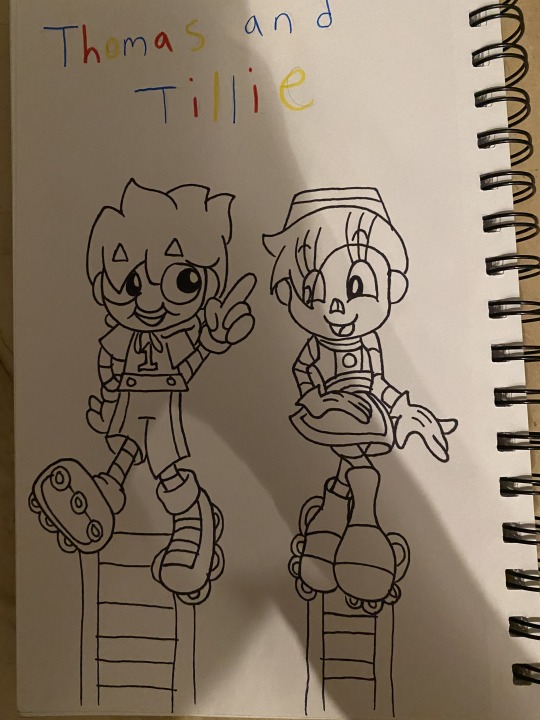

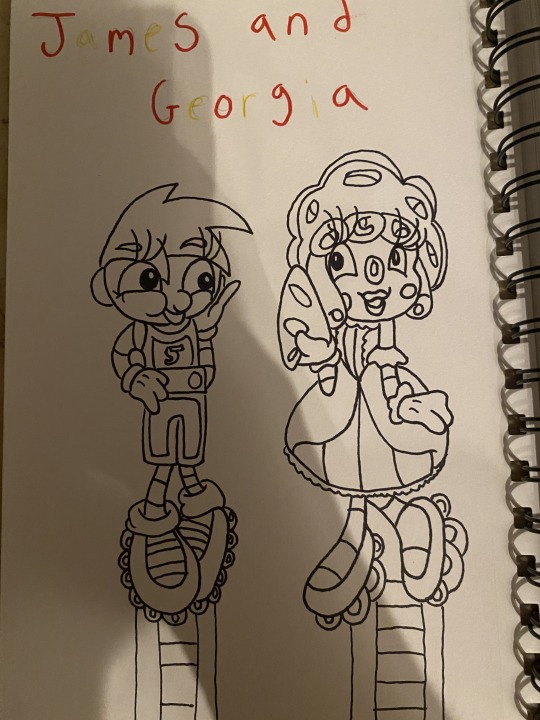



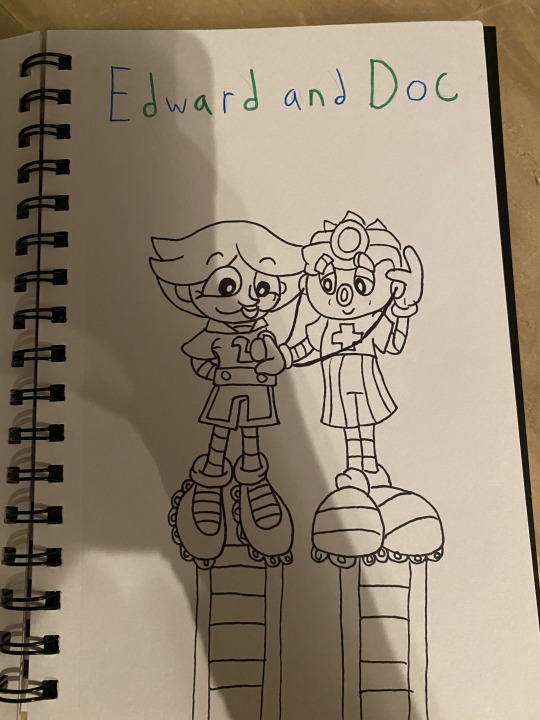
The steam team and their American counterparts!
Thomas/Tillie (both are feisty little blue engines)
Percy/Chip (both are best friends to Thomas and Tillie)
James/Georgia (both are red)
Toby/Jebediah (both are old)
Gordon/Farnsworth (both are big pompous engines that carry the express)
Henry/Pete (both are big and hard working)
Edward/Doc (both are helpful)
#thomas and friends#fan art#the little engine that could#tletc 1991#anthropomorphic locomotive#crossover fanart#i apologize for the lighting#crossover
3 notes
·
View notes
Text
Many degrees of Doctor Stark
It is widely known that 616 Tony has several doctorates. The number varies from 3 to 7, but it doesn't really matter whether he is 300 or 700% Doctor. He is one. And he doesn’t use his title 99.999% of the time.
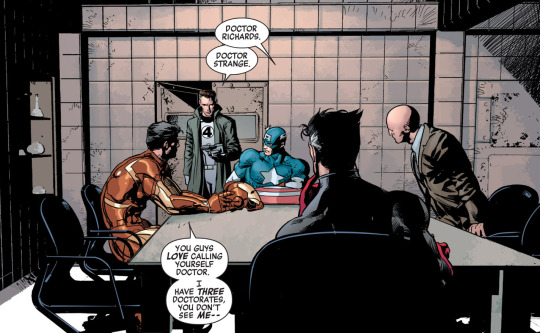
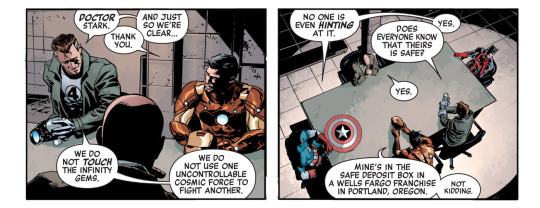
Ok, but what about the MCU?
It is never mentioned whether Tony has a PhD or even a master's degree. Kinda weird. Both the absence of mentions and lack of degrees, since Tony is so smart and productive.
Let’s check, maybe he actually has some.
Here we have a file from a deleted scene from The Avengers (2012):
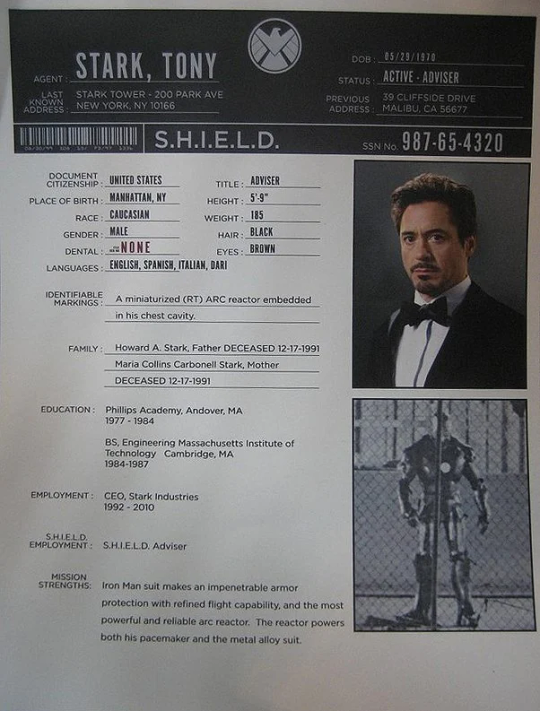
As we can see, the work is sloppy – there are inaccuracies in his hair color (it’s not black, it’s brown), and the fact that he speaks French was not included. Can we rely on this paper? Let’s not 100%, but we can still use things that don't contradict the movies.
The fact that he received his BS in Engineering from MIT does not contradict this, so we can mark it as valid. He started in 1984 when he was 14 years old and graduated in 1987 when he was 17.
We see no further education in the file. But we know something that this file doesn’t. We watched the movies.
Remember, in Civil War at 0:13:25, in the scene where Tony sees his parents for the last time, Maria tells Howard, “Be nice, dear, he’s been studying abroad”. Tony is 21 here, this is December 16, 1991. Looks like he is on winter break.

But wait… Didn’t he graduate in 1987 and stop then? Well, Maria tells us he continued.
Between 17 and 21 there are 4 years. What could he have done in these 4 years? A lot, right? He is smart and productive, we know that. A master’s degree usually takes 2 years. Tony could earn it in 1. 1 or 2, we still have 2-3 years that we need to fill with some kind of studying. I doubt he just went back and got another bachelor's or master's. That said, he was working on his PhD.
We don't know where. “Abroad” is a very broad concept. Maybe he went to Europe to study at Oxford? We do not know. Perhaps he stayed at MIT and just went somewhere else for the fall semester. We do not know. But he did go somewhere for (most probably) a PhD.
The question is: did he finish it?
Well, his parents died in Dec 1991, and we know from the first Iron Man (0:04:50) that Stane was the interim president of Stark Industries from that date until 1992. Most likely, Tony became CEO before his birthday, that is, May 29, which corresponds to the stated age of 21. He had a few months between.
We don’t know where he was in his degree at that time. But we know he is smart and productive. He doesn’t need 4 years to write a dissertation.
So, there are 2 options:
1) He did not complete his doctorate and devoted himself entirely to the company;
2) He completed it in the few months he had and then took over the company.
Here’s the evidence for the second option:
“Confusing matters more, a recently deleted LinkedIn profile for Tony Stark indicated he received doctorates in engineering physics and artificial intelligence.”
Source: https://alum.mit.edu/slice/who-iron-man
Given all the information and analysis we have, as well as a little logic, we can conclude that Tony has a Ph.D. Even two. He had time to do them. Why doesn't he use his title? Well, maybe for the same reason 616 Tony doesn’t? He doesn’t usually brag. Check out this post if you have any doubts about my statement.
Here are some additional hints:
He gave lectures at scientific conferences (IM1 and IM3 - Bern 1999).
His scientific expertise was not limited to engineering and his company's affairs (all the movies, but specifically I can point you to IM3– the scene with Maya Hansen and her Extremis-enhanced plants in Bern).
“He must have graduated after 1990, because the '90 Brass rat was the first one with the skyline on the edge.” MIT alumni commentary https://alum.mit.edu/slice/who-iron-man
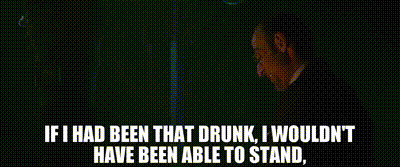

Conclusion (actual): call him Doctor Stark, guys, he deserves it. Despite his modesty about his scientific achievements, Dr Stark has a couple of master's degrees and at least two PhD degrees in the MCU - in engineering physics and artificial intelligence.
111 notes
·
View notes